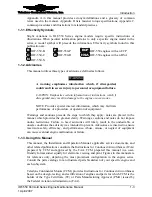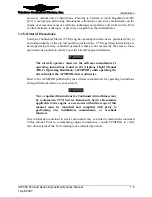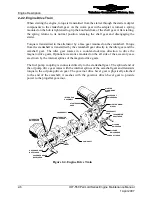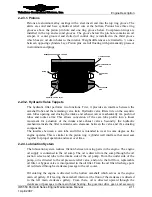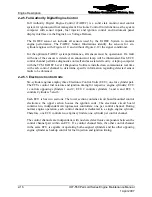
Teledyne Continental Motors, Inc.
TM
Engine
Description
IOF-550 Permold Series Engine Maintenance Manual
2-7
1 April 2007
2-2.2.1. Crankshaft
The crankshaft is precision machined aircraft quality steel having five main journals
which rotate on bearings in the crankcase. Six rod journals are the connecting points for
the connecting rod assemblies.
Counterweights are supplied in matched pairs with the bushings installed; total weight
difference between pairs is not to exceed two grams. Counterweight order number
designates the vibration order the counterweight is capable of absorbing. A sixth order
counterweight is designed to counteract six vibrations per revolution of the crankshaft.
Similarly, if a crankshaft produces five vibrations per revolution, a fifth order
counterweight is used to offset the vibration. Two sixth order counterweights are installed
in the number two crankshaft cheek hangers. On the two number five crankshaft cheek
hangers, one fifth order and one fourth order counterweight is installed.
The crankshaft gear is heated prior to installation to obtain a shrink fit. The gear is
positioned on the crankshaft by a dowel pin; it incorporates a square output coupling to
direct drive fuel pump. The gear also has a machined timing mark to properly position the
crankshaft and camshaft angles.
The alternator drive gear is attached by a flange just behind the number 5 main journal at
the front of the crankshaft and secured by four bolts and lockplates. A neoprene oil seal,
which is stretched over the crankshaft flange, and a split retainer ring are seated between
the crankcase castings in the front crankshaft exit area and is sealed to the crankshaft by a
helical spring inside the seal’s cavity.
PROPELLER
FLANGE
MJ
MJ
# 5
# 4
RJ
# 6
RJ
# 5
MJ
# 3
RJ
# 4
RJ
# 3
MJ
# 2
RJ
# 2
RJ
# 1
MJ
# 1
#5 CRANKCHEEK
#2 CRANKCHEEK
COUNTERWEIGHT BLADE
ALTERNATOR
DRIVE GEAR
FLANGE
OIL SLINGER
Figure 2-5.
Crankshaft
2-2.2.2. Connecting Rods
The connecting rods halves are machined from a single forging of aircraft quality steel
and cut into two pieces, splitting the center of the larger opening of the connecting rod
assembly. The resulting pieces, called the rod and cap are fitted with a two piece bearing
and attach to the crankpin or rod journal with special bolts and nuts.

